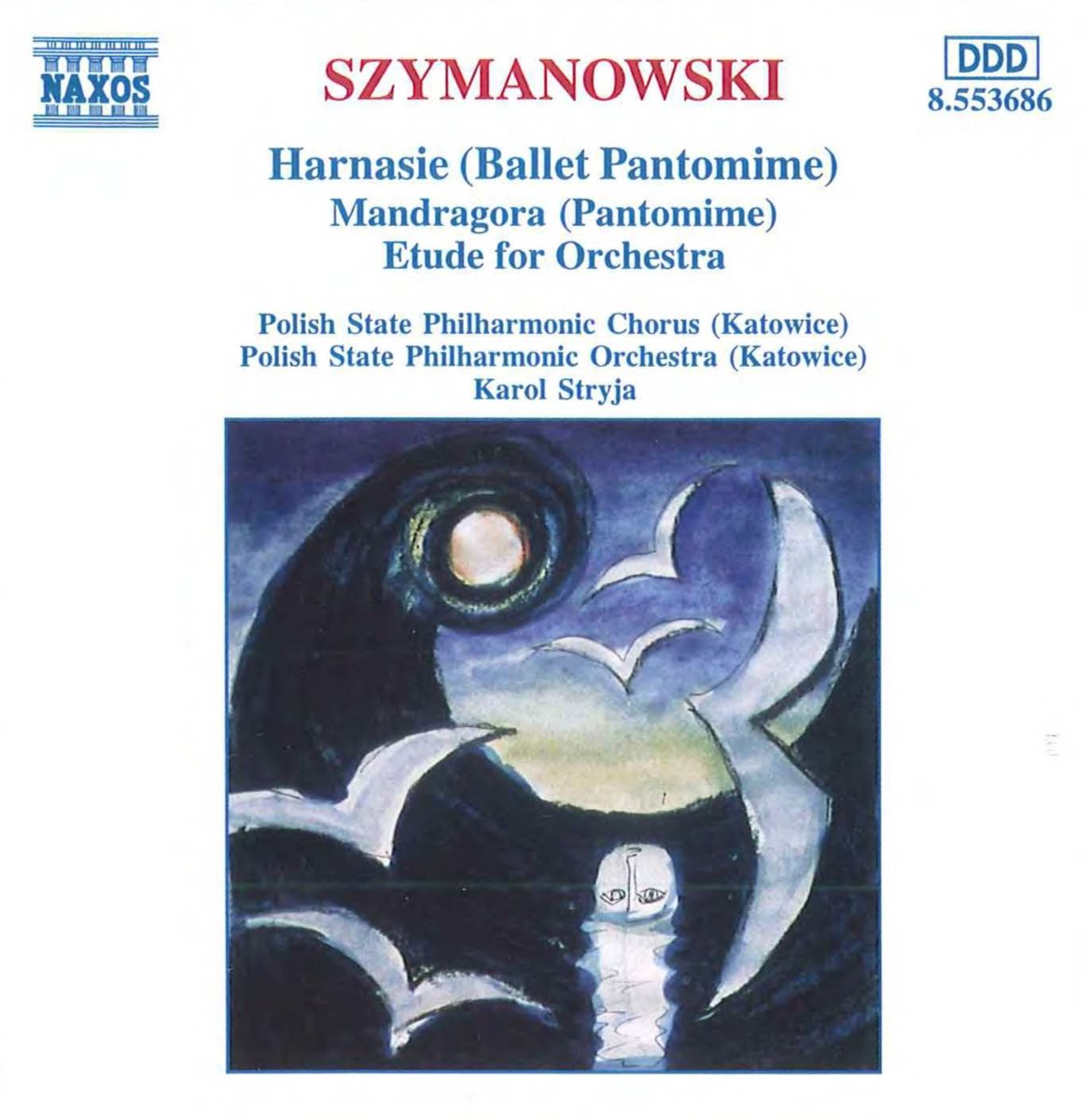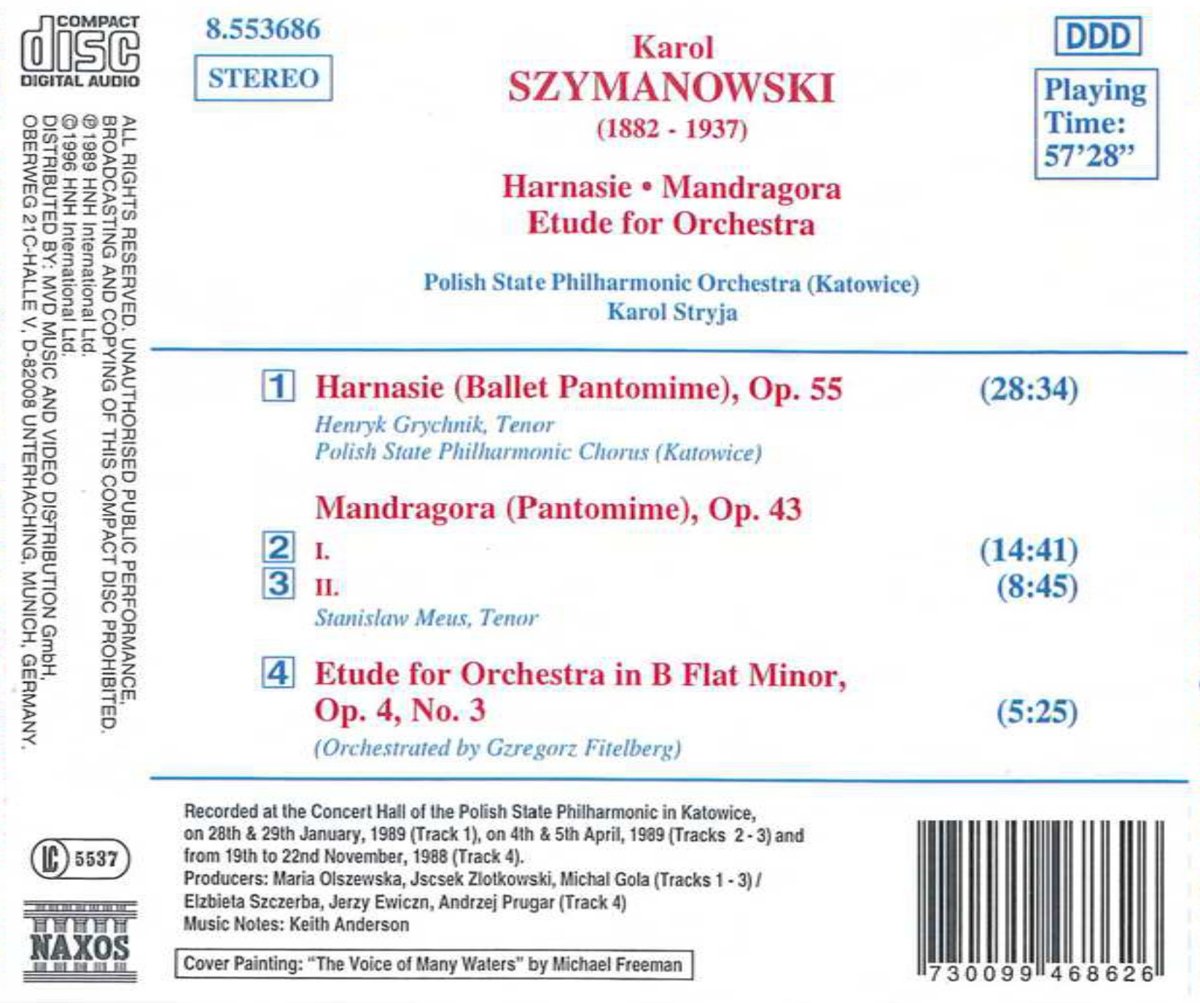
kompozytor
Szymanowski, Karol
tytuł
SZYMANOWSKI: Harnasie. Mandragora.
wykonawcy
Grychnik, Henryk;
Stryja, Karol;
Polish State Philharmonic Orchestra, Katowice;
Polish State Philharmonic Chorus, Katowice;
Meus, Stanislaw
Stryja, Karol;
Polish State Philharmonic Orchestra, Katowice;
Polish State Philharmonic Chorus, Katowice;
Meus, Stanislaw
nr katalogowy
8.553686
opis
In 1921 Szymanowski visited Zakopane, a health resort in the Tatra mountains, and there studied the rich folk-music and folk-dance of the Corals, the inhabitants of the region, to which his attention had been drawn by the folk- music collector Adolf Chybinski. His interest in the region continued and he rented a house there until 1936, when circumstances forced him to relinquish it. The ballet score Harnasie, its title an allusion to the legendary bandits of the Tatra mountains, makes full use of the folk-music that Szymanowski heard, presented with all the richness of his imagination and including original elements deriving their inspiration from the primitive music of the mountain people, with its irregular accentuation and vigorous character. •
The short ballet Mandragora was designed for inclusion in the third act of Moliere's Le bourgeois gentilhomme, the pretext for the Ariadne auf Naxos of Richard Strauss. A pantomime in three scenes designed for the Polish Theatre in Warsaw, the piece was staged there in June 1920. It is in the form of a commedia dell'arte intermezzo and contains strong elements of musical parody, while not without the overt influence of Stravinsky, whose Petrushka had so impressed Szymanowski when he saw the ballet in 1913. Szymanowski had immediately bought the piano score, since he found the work, with its essential Slav character, coincided very much with his own musical inclinations at the time. •
The Etude in B flat minor, originally for piano, needs no comment. It has always enjoyed wide popularity, its debt to Chopin apparent and its melodic appeal immediate, as Paderewski found. Szymanowski was to regret the popularity of the piece, remarking to Fitelberg, who orchestrated the present version, that it was bad luck for a composer to have composed his ninth symphony so early in life.
nośnik
CD
gatunek
Muzyka klasyczna
producent
Naxos
data wydania
10-03-1997
EAN / kod kreskowy
730099468626

(Produkt nie został jeszcze oceniony)
cena 58,00 zł
lubProdukt dostepny w niewielkiej ilości.
Wysyłka w ciągu 3 dni roboczych
Darmowa wysyłka dla zamówień powyżej 300 zł!
Darmowy kurier dla zamówień powyżej 500 zł!
sprawdź koszty wysyłki





































